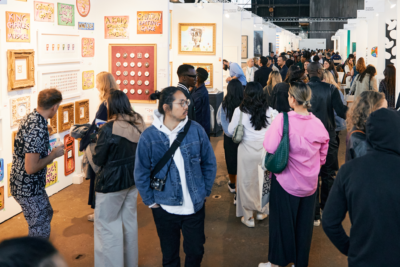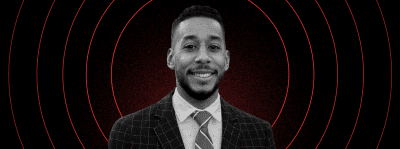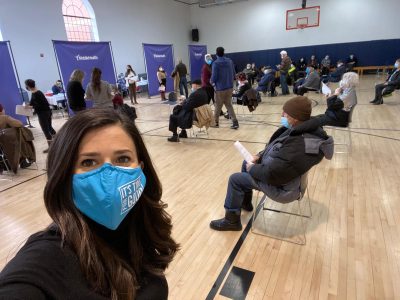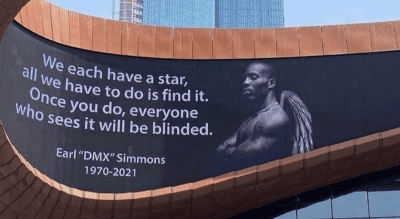Photo by Brian Braiker
A death in the Windsor Terrace family
With the passing of Jimmy “Hooley” Houlihan, the owner-bartender at Farrell’s, another piece of old Brooklyn fades away
We always drank beer from stemmed glasses in Farrell’s. We were college kids, hair creeping down our necks as we met in the crowded, gleaming bar in Brooklyn’s Windsor Terrace to plan the evening or the rest of our lives. Like our parents, we were from there — Holy Name parish — and attended local schools — Brooklyn, St. John’s, St. Francis, ones that we could afford. We were miserable, of course, living at home with our annoying parents and their infuriating questions: “Where you going?” “What time will you be home?” “Don’t forget to go to Mass tomorrow!”
Farrell’s was our refuge, our frat house and it was there, more than 50 years ago, I met Jimmy Houlihan, who served us cold, 15-cent Buds. Hooley was a decade or so older, and like most of the working-class Irish, looked askance at our long hair, ratty jeans and anti-Vietnam war buttons. Yet every Friday, Saturday and more, we stood at the rail with construction workers, cops, firemen and those that still spoke with brogues. And if our politics enraged, and debate became invective, Hooley would simply say: “They’re OK,” and all would be calm.
Farrell’s was never just a place to have a beer. Along with the church, it was the center of our world. There, connections were made, jobs were found, money raised for the nuns, or, quietly, for those without work, a widow with a bunch of kids. In his shirt and tie, second generation owner Eddie Farrell, the founder’s son, made the bar unlike the other saloons that were on every corner — one with class, humility and generosity. But it was more than a place to have a few, it became, as I later realized, family. One of kindness, respect, and even though Hooley with his gruff exterior would never admit it, love.
After Eddie died suddenly and too soon in 1995, I represented the bartenders, Hooley, Danny Mills and Timmy Horan, in the purchase of the business and building. “I want to run it just like Eddie Farrell did,” Hooley told me, and he did and much more. The other bartenders were wonderful characters, but Hooley was the Mayor. He ran the softball and football teams, the trips to Giants’ games, to the Preakness, to Cape Cod, ordered the t-shirts and hats. Hooley was the one who listened to problems and found solutions, while pouring the coldest beer in Brooklyn, always at his own leisurely pace.
When the classrooms in Holy Name school needed painting, Hooley passed the word, dozens answered, and in a weekend, the 30 or so classrooms, with their 20-foot ceilings, looked new. He organized fundraisers, like the Eddie Farrell Golf Outing, to support Holy Name School and Bishop Ford High so many could afford tuition. He was behind the two celebrated neighborhood reunions, each attended by 1,500, drawing back those who fled to the Island, Jersey, Florida, back to our happiest days. We were all desperate to capture, one last time, the joy and contentment of a community so close and so valued that my wife calls it a cult. Hooley with his wry and welcoming smile was our link to those precious times.
Change happens despite our opposition. Over the years, our working-class neighborhood gradually and suddenly gentrified. Gone were the large families living paycheck to paycheck replaced by professionals — lawyers, writers, artists. Holy Name church and school were no longer packed. Even the schoolyard — where we spent every free moment — was no longer a utopia teeming with kids playing basketball, stickball, punchball, but was now a cold, concrete slab, empty of fun and life. Narrow row houses, like the one my immigrant grandfather bought in 1945 for $15,000, sell for millions. Where you once knew everyone, you now know almost no one.
Yet even as the neighborhood and the world changed, Hooley, in his apron with his direct manner, made sure Farrells didn’t, at least not too much. Sure, styrofoam containers were outlawed; stools appeared and mixed drinks no longer meant a shot and a beer, but t-shirts still cost $15, and the beer was still the best. Yet, over the years, people move and, tragically, die, including many we knew on 9/11, like FDNY Captain Vinny Brunton, who bartended for years and was an integral part of the Farrell’s family. Danny Mills passed in 2008, Timmy Horan in 2017.
Time and too many years on his feet slowed Hooley. His commute from his home in Suffolk County began to wear. He never complained about aging, or his personal grief, losing his beloved Maureen to the cancer, and then his lovely second wife, Eileen, to that same dreadful disease. “I’m going to hang it up,” he told me, “but I’ll go out with a party.” The t-shirts read: “Hooley’s Last Call, April 18, 1965 to November 16, 2019,” and the bar was jammed with all those who adored this honest and considerate man. A typical Irish wake.
We spoke every few weeks or so, and then he had to move in with his son, Jimmy. He didn’t get around so good, he said. And soon there was mention of a walker, a wheelchair, rehab. Finally, I called and he didn’t pick up, an ominous sign. On September 17, 2022, Jimmy died.
Once, working class neighborhoods abounded in Brooklyn — Greenpoint, Park Slope, Carroll Gardens, Williamsburg, Fort Greene — and they’re almost all gone, replaced by nice people, of course, but different, with money, education, but lacking a shared connection to each other, to the block, to the community. They don’t know everyone, nor seem to care to. Too busy to stop and chat, ask about family, friends. They don’t tend to meet in places like Farrell’s to talk, laugh and toss a few bucks for someone in need, as they say today.
Jimmy Houlihan, in his unassuming, kind way, maintained, for decades, the wonderful ideal of caring for and helping not only each other, but the neighborhood and its institutions which bound us together those many years ago. Jimmy did it without conceit or acclaim, but because it was right and good and, as a humble bartender in a corner bar, knew nothing else. I hope I am wrong when I state that Hooley’s cosmic last call marks the disappearance of working-class neighborhoods, a way of life, never to be repeated in my beloved Brooklyn. I hope others emulate his gentle, generous life; a life of a neighborhood guy who done good.
A version of this memorial first appeared in Mr. Beller’s Neighborhood.
You might also like 


























